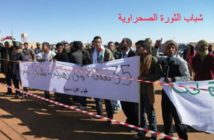By ADAM NOSSITER and ERIC SCHMITT
BAMAKO, Mali — In the face of fierce, all-night bombardment by the French military, Mali’s Islamist insurgents have hunkered down to fight again.
Barging into some of the mud-brick houses in the battle zone and ejecting residents, they have sought to implant themselves in the local population and add to the huge challenges facing the French military campaign to loosen their grip on Mali.
“They are in the town, almost everywhere in the town,” said Bekaye Diarra, who owns the pharmacy in Diabaly, which experienced French bombing well into the morning on Tuesday but remained under the control of the insurgents. “They are installing themselves.”
Benco Ba, a parliamentary deputy there, described residents in fear of the conflict that had descended on them. “The jihadists are going right into people’s families,” he said. “They have completely occupied the town. They are dispersed. It’s fear.”
Just five days into the French military campaign, it was becoming clear that airstrikes alone will probably not be enough to root out these battle-hardened fighters, who know well the harsh grassland and desert terrain of Mali and have spent months accumulating arms, constructing defenses in their northern strongholds and reinforcing their ranks with children as young as 12 years old.
Containing their southern advance toward Bamako, the capital, is proving more challenging than anticipated, French military officials acknowledged Tuesday. And with the Malian Army in disarray and no outside African force yet assembled, displacing the rebels from the country altogether appears to be an elusive, long-term challenge.
The jihadists are “dug in” at Diabaly, Defense Minister Jean-Yves Le Drian ofFrance said Tuesday at a news conference. From that strategic town, they “threaten the south,” he said, adding: “We face a well-armed and determined adversary.”
Mr. Le Drian also acknowledged that the Malian Army had not managed to retake the town of Konna, whose seizure by the rebels a week ago provoked the French intervention. “We will continue the strikes to diminish their potential,” the minister said.
Using advanced attack planes and sophisticated military helicopters, the French campaign has forced the Islamists from important northern towns like Gao and Douentza. But residents there say that while the insurgents suffered losses, many of them had simply gone into the nearby bush.
“Bombing will weaken them, and it will stop their advance,” said Djallil Lounnas, an expert on the region at the University of Montreal who has written widely on Al Qaeda in the Islamic Maghreb, one of the main extremist groups in northern Mali. “But as soon as the bombing stops, they’ll come back.”
Since the French started bombing, he said, “the situation has changed slightly, but not fundamentally.”
Other analysts said that while forcing the insurgents from the cities was achievable, eliminating them altogether would require considerable additional effort.
“You can’t launch a war of extermination against a very tenacious and mobile adversary,” said Col. Michel Goya of the French Military Academy’s Strategic Research Institute. “We are in a classic counterinsurrectionary situation. They are well armed, but the weapons are not sophisticated. A couple of thousand men, very mobile.”
And they have been preparing for battle for months.
One resident of Gao who accompanied Islamist fighters to a desert hide-out in recent months described a vast system of underground caves big enough to drive cars into, said Corinne Dufka, a senior researcher at Human Rights Watch.
Around 100 Islamist fighters, many of them bearded foreigners speaking Arabic, had gathered inside, stockpiling weapons, vehicles, generators and scores of barrels of gasoline, the resident said. The bunker was well camouflaged, almost invisible from the rugged roads, and had long been used by bandits in the area. But the Islamists were expanding the tunnels and, even before the French campaign, had been gathering in them from towns across the north.
While striking the Islamists from the air, France was steadily building up its forces on the ground: 200 more soldiers and 60 armored vehicles arrived in Mali overnight on Tuesday from Ivory Coast, bringing the total to nearly 800 soldiers. The French Defense Ministry said the force would soon number 2,500, in the vicinity of its peak Afghanistan deployment. Late Tuesday, a French convoy was heading north from Bamako; a military spokesman refused to disclose its destination.
France is the former colonial power in Mali, and Mr. Le Drian, the defense minister, has said it intervened to prevent the possible collapse of Mali’s government and “the establishment of a terrorist state within range of Europe and of France.” The French mission is aimed at supporting an African force that is still being assembled and that French officials said could begin to deploy in as soon as a week. The United States has also committed its support to the French mission.
Defense Secretary Leon E. Panetta, traveling in Spain, said that France faced a difficult task in taking on the extremists and that the Pentagon remained in talks with the French about what sort of aid was required.
“I can’t really give you a full analysis as to just exactly what they’re targeting and how successful or not successful they may be in that effort as of this moment,” Mr. Panetta said at a news conference with the Spanish defense minister, Pedro Morenés. But Mr. Panetta added that “any time you confront an enemy that is dispersed and that is not located necessarily in one area makes it challenging, and the ability to go after that enemy and be able to stop them from moving forward represents a difficult task.”
The implications of the nascent French deployment — and of the Islamist takeover of Diabaly, only about 220 miles from the capital here — seem clear: rooting out the few thousand insurgents could well be a slog.
The Islamists are well armed, with AK-47s, rocket-propelled grenades and heavy machine guns mounted on vehicles, as well as some armored personnel carriers seized from the Malian military last year.
A former captive of Al Qaeda in the Islamic Maghreb in Mali, the Canadian diplomat Robert Fowler, described a very fit band of men, adept at quickly staging heavy weaponry on trucks. One of their leaders, Mr. Fowler wrote in a memoir, “would escort the half-dozen younger ones on training missions at the run, and they practiced small-unit tactics, slithering among the rocks and dunes for hours in the blistering sun.”
He continued, “They ran up and down mountains and did sentry duty at least twice each day, in addition to performing their various chores and going on missions.”
In the initial clashes, allied officials said, French airstrikes inflicted heavy losses on Islamist columns that could be easily identified and attacked as they advanced on roads. That led to some optimistic assessments of a rout.
But a military spokesman for the French operation in Mali said Tuesday that the Islamists had taken more territory since the French air raid began because the fighters were mixing in with the population and making it difficult to bomb without causing civilian casualties.
“It’s really much too soon to tell how this fight will turn out,” said an American official who has been surveying the battle from afar.
Adam Nossiter reported from Bamako, and Eric Schmitt from Washington. Steven Erlanger and Scott Sayare contributed reporting from Paris, and Elisabeth Bumiller from Madrid.
.







